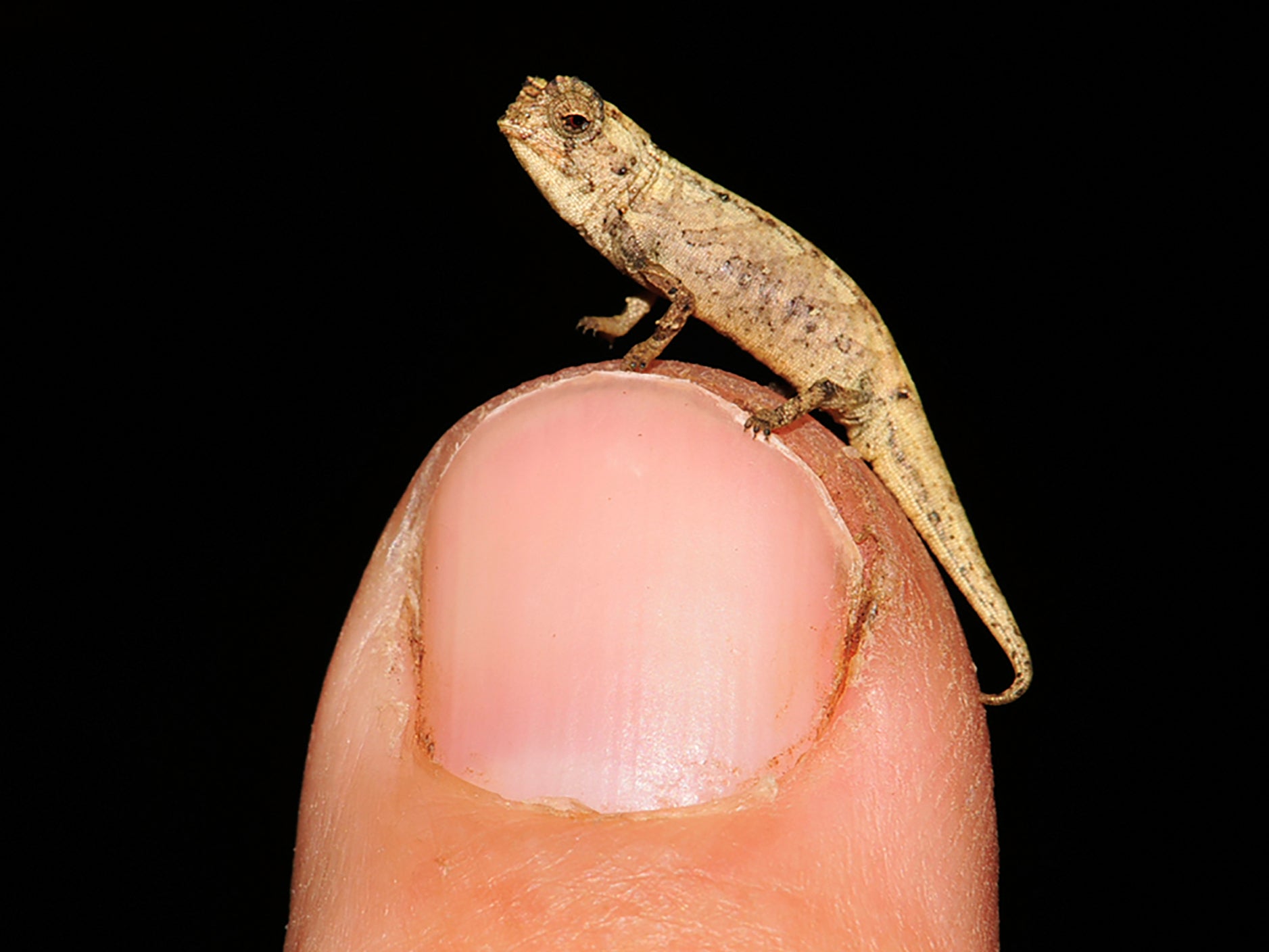World’s ‘smallest reptile’ discovered in Madagascar and may already be endangered
Scientists want mini-chameleon to be assessed red list of threatened species as soon as possible

Scientists have discovered a miniature chameleon that they believe could be the smallest reptile on Earth.
Small enough to stand on a human fingertip, two of the lizards, a male and a female, were discovered in a patch of rainforest in northern Madagascar.
But the species might already be threatened with extinction, the journal Scientific Reports said.
Poverty and growing populations have led to the clearing of rainforests to make room for farmed animals in the country in the Indian Ocean. More than 90 per cent of Madagascar’s forests have been razed, according to Nasa.
The pair, about the size of a sunflower seed, were found by a German-Madagascan team.
The scientists recommended the species be assessed officially for the IUCN red list of threatened species as soon as possible.
Mark Scherz, an evolutionary biologist at the University of Potsdam and study co-author, told National Geographic: “It’s all good and well to say, ‘I really hope that people stop deforesting this forest’, but until the economic future of Madagascar changes, there’s no hope for any of its wildlife because the people have to eat.”
However, Oliver Hawlitschek, a scientist at the Centre of Natural History in Hamburg, said: “The nano-chameleon’s habitat hasunfortunately been subject to deforestation, but the area was placed underprotection recently, so the species will survive.”
The male “Brookesia nana”, or nano-chameleon, has a body that is only 13.5mm (just over half an inch) long, making it the smallest of all the roughly 11,500 known species of reptiles, zoologists said. Its total length from nose to tail is nearly 22mm.
The female is far bigger, at around 29mm long.
The tiny reptile has a projectile tongue, which it uses to nab prey, mostly mites.
Frank Glaw, who was part of the international team of researchers that classified the new species, said the pair were spotted on a mountainside by a local guide. “You really have to get down on your knees to find them,” he said. “They are obviously camouflaged and they move very slowly.”
He and his colleagues performed a CT scan of the female and discovered that it harboured two eggs, confirming that it was an adult.
Subscribe to Independent Premium to bookmark this article
Want to bookmark your favourite articles and stories to read or reference later? Start your Independent Premium subscription today.

Join our commenting forum
Join thought-provoking conversations, follow other Independent readers and see their replies